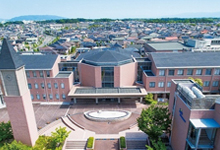One of the higher brain dysfunctions that occurs after a stroke, "unilateral spatial neglect," is a mysterious symptom that makes it impossible to recognize objects and events in the space opposite the damaged brain.Generally, it is evaluated by paper examination and behavioral observation, but there are limits such as it takes time to perform the examination, it imposes concentration and cognitive load on the patient, and it is difficult to evaluate patients with high severity. There was a point.
This time, a research group of Kiou University and the National Rehabilitation Center for Persons with Disabilities has developed a new method to capture unilateral spatial neglect easily and quantitatively using eye-gaze analysis.By analyzing the distribution characteristics of the line of sight when looking at a pair of images that are flipped horizontally, rather than simply analyzing the line of sight when gazing at various images, how the line of sight looks according to the spatial arrangement of the gaze target. It is said that it is possible to evaluate the degree and characteristics of neglected symptoms by grasping whether it changes to.
Normally, our line of sight concentrates on the right space if there is a gaze object in the right space of the screen, and if the gaze object moves to the left by flipping the image left and right, the line of sight also concentrates on the left space.On the other hand, a patient with unilateral spatial neglect cannot search for an object even if the object to be gazed moves to the left, and still has the characteristic of gazing at the right space.This characteristic can be used to capture the characteristics of neglected symptoms.
By using a left-right inverted image, it is possible to evaluate by inverting only the left-right spatial positional relationship while unifying physical elements (brightness, color, etc.) and cognitive elements (meaning, context, etc.). It's a big advantage of the method.It is said that the evaluation result by the gaze analysis of this left-right inverted image showed a significant correlation with the behavioral neglect test (BIT) result usually used in clinical practice, and its usefulness is also suggested.In the future, it can be expected to be used for understanding neglected symptoms in clinical situations.
Paper information:[Cortex] Visual search pattern during free viewing of horizontally flipped images in patients with unilateral spatial neglect

